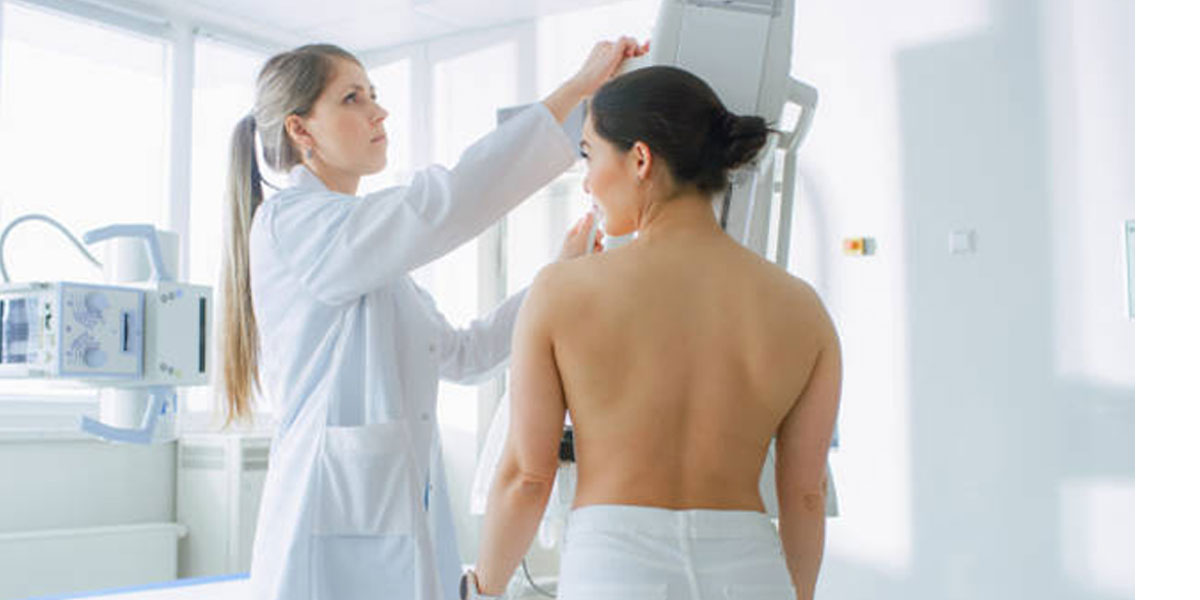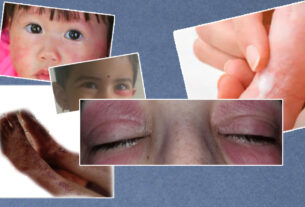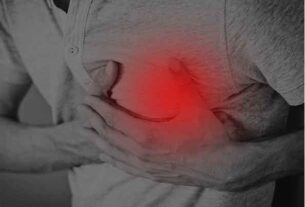Breast cancer is the most common malignancy in women, second only to cancer cervix. The incidence of breast cancer is 30 per 100,000 women. The average age at presentation is 43 to 46 years. Unfortunately, 60% of cases are detected very late increasing the mortality. A
patient diagnosed with localized breast cancer with no auxiliary node involvement have a 5-year survival rate of 98%. Conversely, only 6% of patients diagnosed with advanced-stage breast cancer with spread (metastasis) to a distant region of the body will survive 5 years or more.
RISK FACTORS
- Being Female – Women having a higher risk than men
- The majority of breast cancers are found in After 50 years of age there is a greater risk of incidence
- Genetic history – Breast cancer in a first-degree relative, particularly when premenopausal or bilateral increases risk. Gene mutation plan a role in 5% to 10% of breast cancer cases
- Early menarche (before age 12 ) and late menopause (after age 55) – A long term menstrual history increases the risk of breast cancer
- First full-term pregnancy after age 30 – prolonged exposure to unopposed estrogen increases the risk of breast cancer
- Benign breast cancer with atypical epithelial hyperplasia, lobular carcinoma in situ – A typical changes in breast biopsy increase the risk of breast cancer
- Weight gain and obesity after menopause – fat cell store estrogen
- Exposure to ionizing radiation – Radiation damages DNA
- Drinking alcohol –increased intake of alcohol will increase the risk of breast cancer.
Some factors that place women at greater risk of breast cancer have been identified. Women are at far greater risk than men because 99% of breast cancer occurs in women. As age increases the risk of developing breast cancer will also increase. The incidence of breast cancer
in women under 20 years of age is very less and gradually increases until the age of 60. After age 60 the incidence increases dramatically. Having a first degree relative with breast cancer increases a women’s risk of breast cancer 1.5 to 3 times, depending on age. Data flow from the women’s health initiative study has shown that the use of combined hormone replacement therapy (estrogen plus progesterone) increases the risk of breast cancer while also increasing the risk of having a larger, more advanced breast cancer at diagnosis. The use of estrogen replacement therapy alone does not currently appear to increase breast cancer risk A link may exist between recent oral contraceptive use and increased risk of breast cancer for women under age 35.
SYMPTOMS
- Nipple push in toward your body
- Redness over the skin of the breast
- pitting over your breast, like the skin of an orange
- Lump over the breast while examining
- Peeling, scaling, crusting of areola or breast skin
- Skin changes over the breast
- variation in the appearance, size, shape of a breast
- Discharge from the nipple
- Breast pain
- Breast rash
WHEN TO CONSULT A DOCTOR
If you find a change or thickening over your breast, make an appointment with your doctor
PREVENTION
Examine your beast regularly
Self-breast examination
- STEP 1: while in a shower or bath, when the skin is slippery with soap and water, examine your breast. Use your finger pads to firmly press every part of the breast. for examining your left breast, use your right hand, and use your left hand to verify your right breast. Using fingers of your left hand, examine the entire breast in a circular motions/ spiral or an up and down movement so that the entire breast area is examined
- Repeat this procedure using your right hand to examine your left breast. Repeat pattern of palpation under the arm. Check for the lump, hard knot, or thickening of the tissue.
- STEP 2: Look at the breast in a mirror. Stand with your arms at the sides.
- STEP 3: Raise your arms overhead and check for any changes in the shape of your breast, dimpling of the skin, or any changes in the nipple
- STEP 4: Next place your hands on your hips and press down firmly, tightening the pectoral muscle. Examine for changes in appearance, keeping in mind that your breasts probably do not exactly match
- STEP 5: While lying down, feel your breasts as described in step 1, when examining your breast, place a folded piece of cloth under your right shoulder and bring your right hand behind your head. Repeat the same for your left breast.
COMPLICATIONS
The main complication of breast cancer is recurrence. It may be on the local regional or distant (most commonly involving the bone, lung, brain, and liver). However metastatic disease can be found in any distant site
COLLABORATIVE CARE
Diagnostic
- History collection, including risk factors
- Physical examination, including breast and lymphatics
- Mammography
- Ultrasound
- Biopsy
- MRI (if indicated)
Staging workup
- Complete blood count, platelet count
- Calcium and phosphorus level
- Liver function tests
- Chest x-ray
- Bone scan (if indicated)
- CT scan of chest, abdomen, pelvis (if indicated)
- MRI (if indicated)
Collaborative therapy
- Breast-conserving (lumpectomy) with sentinel lymph node biopsy/ dissection and/ or axillary lymph node dissection
- Modified radical mastectomy
Radiation therapy
Radiation therapy uses greater form of radiation to kill cancer cells or keep them from growing and dividing. Radiation therapy is primarily used as a treatment to prevent local breast recurrences after breast conservation surgery, Radiation therapy is a form of cancer treatment
that uses high energy X-rays to destroy cancer cells while reducing destruction to healthy cells. adjuvant treatment following mastectomy to prevent a local and nodal recurrence.
Mastectomy
Historically, a mastectomy (removal of the breast, pectoral muscles, axillary lymph nodes, and all fat and adjacent tissue) was the standard of care. Presently a wide range of treatment options is available to both the patient and health care providers attempting to make a critical decision about what treatment to select
Postoperative exercises for the patient with a mastectomy
Deep Breathing Exercise –
Deep breathing can aid you to relax and reduce discomfort and tightness around your surgical cut. It’s also a very good way to relieve stress during the day.
-Sit comfortably in a chair.
-Take a slow, deep breath through your nose. Let your chest and belly expand.
-Breathe out slowly through your mouth.
-Repeat as many times as needed.
Arm and shoulder exercises –
arm and shoulder exercises will aid you to get back your full range of movement on your side where you had your surgery). With the full range of motion, you’ll be able to:
-Move your arm over your head and out to the side
-Move your arm behind your neck
-Move your arm to the middle of your back
Do each exercise less than 5 times a day. Keep continuing this until you got a full range of motion again and can use your arm as you did before surgery in all your normal day to day activities.
Shoulder Rolls –
The shoulder roll is a effective exercise to start with because it smoothly stretches your chest and shoulder muscles.
-Stand or sit comfortably with your arms relaxed at your sides.
-Start with backward shoulder rolls. In a circular motion, make your shoulders forward, up, backward, and down 10 times.
-Switch directions and do 10 forward shoulder rolls. Bring your shoulders backward, up, forward, and down. Do this 10 times.
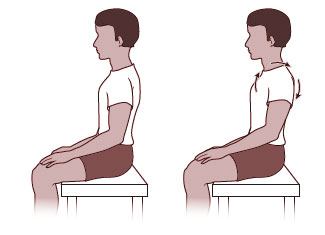
Shoulder wings –
The shoulder wings exercise will aid you to get the outward motion of your shoulder. You can perform this exercise while on a sitting or standing position
-Place your hands on your chest or collarbone.
-Raise your elbows out to the side, limiting your range of movement as explained by your physiotherapist
-Slowly lower your elbows.
-Do this 10 times. Then, slowly lower your hands.
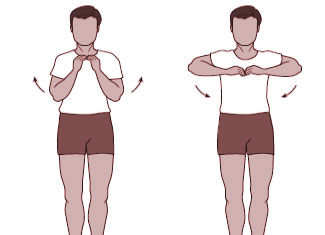
Arm circles –
If you had surgery on both of your breasts, do this exercise with only one arm at a time. Don’t try to do this exercise with both arms at the same time. This will put too much pressure on your chest.
-Stand with your feet and legs apart for balance. Raise your arm of the affected side as high as much as possible you can, limiting your range of movement as instructed by your physician
-Start doing backward slow circles in the air with your arm. Do remember you’re moving your arm from your shoulder, not your elbow. Keep your elbow straight.
-Increase the dimension of the circles until they’re as huge as you can comfortably make them, limiting your range of motion as instructed by your physiotherapist
-If you feel any type of pain or if your arm is tired, take an instant break. Keep doing the exercise after some time
-Do 10 full backward circles. Then, slowly lower your arm to your aspect. Rest your arm for an instant
-Follow steps 1 to 4 again, but this time do forward slow circles
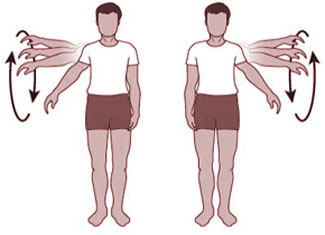
Medication
Chemotherapy: Drugs may be recommended before or after the surgery to reduce the mass size and prevent spread or recurrence.
Eg: Capecitabine . Carboplatin . Doxorubicin . Vinorelbine
Hormone therapy: Drugs used in hormone therapy help in regulating the proliferation of hormone-sensitive cancer cells and prevent the production of hormones or reduce their activity.
Eg: Raloxifene . Tamoxifen . Fulvestrant . Leuprolide
Nutrition
FOOD TO EAT
- Food rich in fiber like whole grains, beans, and legumes
- Food rich in vitamin D like beef liver, cheese, and egg yolk
- Low-fat dairy products and milk
- Food with anti-inflammatory properties like spices
FOOD TO AVOID
- Alcoholic drinks
- Food with high sugar content like sodas, candies, and sweets
- Food with high-fat content like fried food, crackers, and processed food
- Red meat
